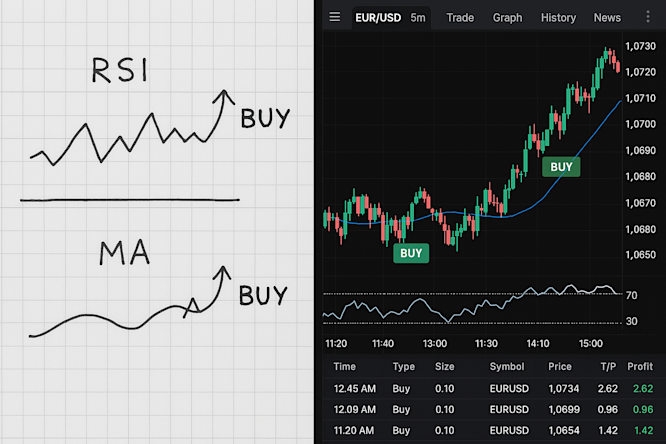How to Build and Backtest Your First Algorithmic Trading Strategy
Trading Strategies
A beginner-friendly guide to turning trading ideas into automated systems.
Algorithmic trading is no longer the exclusive playground of hedge funds. With the rise of user-friendly platforms, accessible data, and powerful no-code tools, anyone—from independent traders to fintech startups—can now design, test, and launch trading strategies that run on autopilot.
In this post, we’ll walk you through the process of building and backtesting your first algorithmic trading strategy — no fluff, just practical steps.
Let’s dive in.
Step 1: Start with a Simple Trading Logic
Before you touch a tool or write a single line of code (or drag-and-drop a block), you need a clear plan.
Ask yourself:
What type of strategy are you creating? (Trend-following, mean reversion, breakout?)
What assets will you trade? (Stocks, ETFs, options, futures?)
What’s your time frame? (Intraday, swing, positional?)
What indicators will drive your buy/sell decisions?
Sample Logic:
“Buy when the 20-day moving average crosses above the 50-day moving average and RSI is below 60. Sell when RSI goes above 70.”
Start simple. It’s easier to build, test, and understand — plus, it helps you stay grounded in data instead of emotions.
Step 2: Choose the Right Tools
A solid algo trading setup requires three main components:
1. Market Data
You’ll need historical and real-time data — typically OHLCV (Open, High, Low, Close, Volume) — to test and execute your strategy.
Free sources: Yahoo Finance, NSE India
Premium APIs: Polygon.io, Quandl
Built-in access: Some platforms offer integrated datasets for seamless testing and live deployment.
2. Backtesting Engine
This lets you run your strategy on past data to evaluate performance before risking real capital.
For coders: Python tools like Backtrader, Zipline, or QuantConnect
No-code option: Some platforms provide easy, click-based backtesting with preloaded data
3. Broker Integration
To trade live, you need broker API access.
Platforms like Alphabots offer native integration with major Indian brokers (Zerodha, Upstox, Angel One) — so no additional development work is needed.
Step 3: Backtest Your Strategy
Now, it’s time to simulate your logic on historical data and measure how it performs.
Key Metrics to Track:
CAGR: Compounded annual growth rate
Max Drawdown: Your worst-case downside
Sharpe Ratio: Risk-adjusted return
Win/Loss Ratio: Your success rate
Trade Frequency & Holding Time: How often and how long you hold trades
Pro Tips:
Test on out-of-sample data to avoid overfitting Include slippage and transaction costs Avoid look-ahead bias — never use future data in your backtests
Step 4: Optimize Without Overfitting
It’s easy to fall into the trap of endlessly tweaking your strategy to make the backtest look perfect.
But remember: past performance ≠ future results.
Focus on:
Testing only a few key parameters (like MA lengths, RSI thresholds)
Keeping your logic simple and explainable
Less complexity usually means better performance in real markets.
Step 5: Paper Trade Before Going Live
is your safety net — a way to test everything in real-time without using actual money.
It allows you to:
Confirm your signals are triggering correctly
Check broker connections
Monitor trade execution speed and slippage
Build confidence before going live
On platforms like Alphabots, switching between paper and live trading is effortless — plus, you can view detailed logs and even retry failed trades in a click.
Step 6: Go Live, But Start Small
Once you’re confident, it’s time to deploy. But do it carefully.
Start with a small capital allocation and monitor:
How reliably your trades execute
Whether your strategy performs consistently
Weekly or monthly performance trends
You can scale up gradually, making data-driven decisions as your algo proves itself in real market conditions.
Final Thoughts: Start Smart, Not Complicated
You don’t need a PhD in finance or programming skills to get started with algorithmic trading.
The real challenge? Thinking clearly, testing rigorously, and staying disciplined.
Platforms like Alphabots lower the barrier to entry — so even if you’ve never written a line of code, you can still bring your ideas to life.

